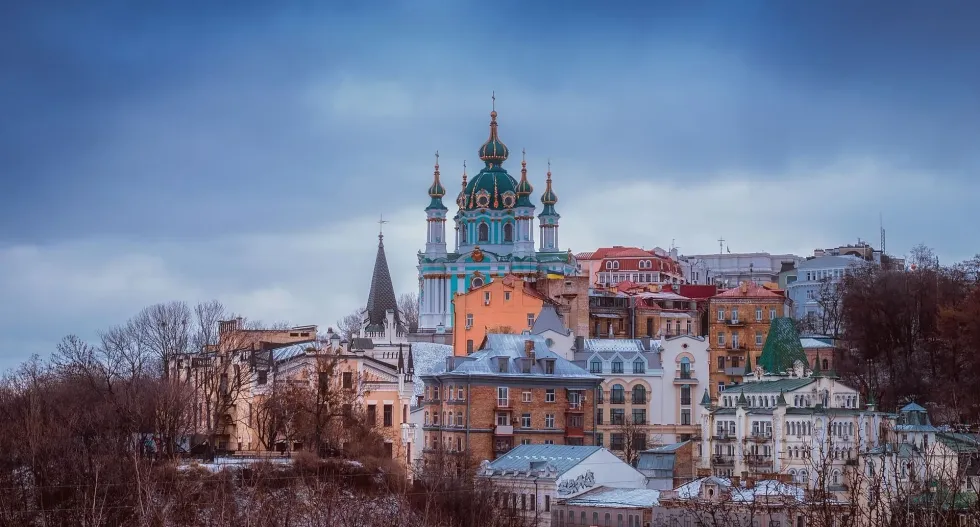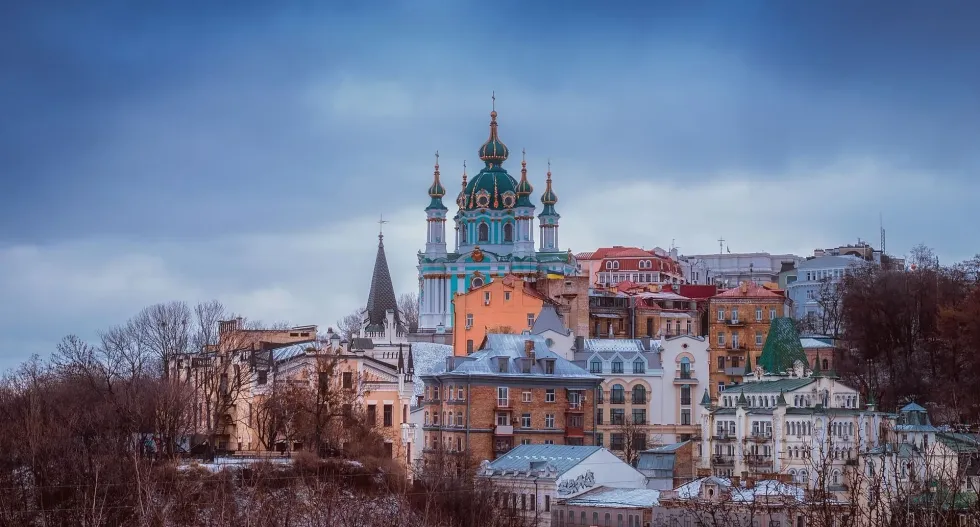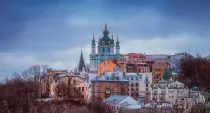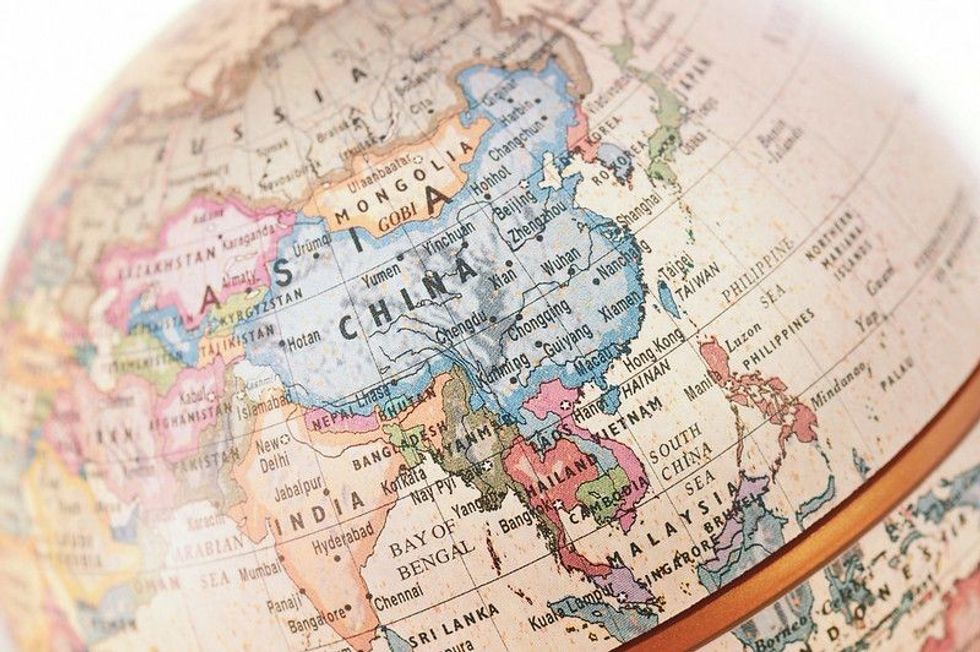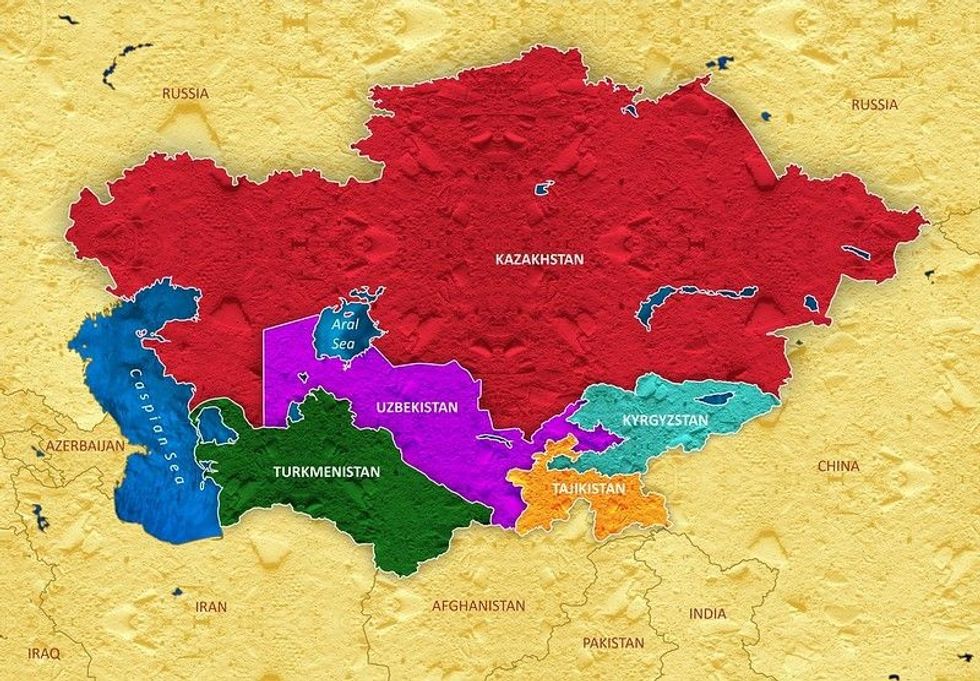80+ Exceptional Ukrainian History Facts To Teach Your Kids

Located in eastern Europe, bordering parts of Russia, Ukraine covers an area of 233,062 sq. mi (603,628 sq. km).
The history related to Ukraine is undoubtedly quite fascinating. Interestingly, during the Soviet era, Ukraine was known as the Ukrainian SSR.
The official language of Ukraine is the Ukrainian language, which is considered one of the Slavic languages. Several immigrants settled in the region we now know as Ukraine.
Hence, Ukraine was always a melting pot of culture. In present times, Ukraine has flourishing industrial and agricultural sectors, all thanks to its finance ministry, which is headed by Finance Minister Sergii Marchenko. However, Ukraine is engaged in conflict with neighbouring Russia.
To learn more about Ukraine and its eastern culture, keep reading.
History Of Ukraine
The history of Ukraine spans countless events that not only helped shape the culture of the country, but the whole of the European continent. One of the main features of Ukraine is that the settlements and cultural exchanges that took place in Ukraine varies depending on the three geographic zones around the country.
For instance, the open steppe region, which extends from eastern Ukraine to southern Ukraine, was the perfect corridor for nomadic horsemen from Central Asia to make their way into Europe.
- Before Homo sapiens, other members of the genus Homo inhabited Ukrainian territory. Archaeological findings have pointed at the presence of Neanderthals, Homo neanderthalensis. The Neanderthal men and women occupied Ukraine from 43,000-45,000 BC.
- During the later ages of the Neolithic Era, the Tripolye culture was predominant in Ukraine. This culture was also found along the eastern regions of the continent.
- One of the most fascinating features related to the Tripolye settlement was the practice of intentionally burning the settlements. Why this practice was carried out continues to remain a mystery. The people of the Tripolye cultures actively burnt down their settlement areas after a period of 60-80 years.
- Following the Neolithic and Copper Ages came the Iron Age. During this age, various other cultural settlements graced the lands of Ukraine. One such notable settlement was made by various Greek colonies, who settled on the northern coast along the Black Sea. They also settled along the Sea of Azov.
- Subsequently, other groups residing in Ukraine were the Cimmerians, Scythians, and the Sarmatians. These were groups of nomadic people who occupied Ukraine one after another and maintained relations with the Greek colonies.
- Between 250-375 AD, the Goths migrated to Ukraine from regions of Baltic states, or more precisely, the northeastern parts of Europe.
- The Goths disrupted and displaced the Sarmatian population and settlements.
- Eventually, the Goth settlement in the country was run over by the Huns, who defeated the Goths in 375 AD, giving rise to the Hunnic Empire. This Empire covered most of today's Ukraine and some additional areas as well.
- Following the Hunnic Empire, the land of Ukraine faced several other invasions, including those from the Volga Bulgars, Avars, Khazars, and Magyars.
- It was also during this time; the various Slavic Tribes began their migration. The East Slavs migrated and settled in the north-central and western Ukraine.
- One of the most notable Slavic settlements in Ukraine was that in Kyiv or Kiev. Genetic studies of modern times show that most of the Slavic expansion began from Ukraine itself.
- One of the most notable developments in Ukrainian history was the formation of the Kyivan Rus, which began in the middle of the 9th century. However, various aspects of the Kyvian Rus continue to be a matter of great debate. Nevertheless, the Kyvian Rus was the most powerful and largest state in the whole of Europe during its existence.
- The Rus existed from 879-1240 AD. It was finally defeated in the Mongol Invasion and Tatar raids.
- In the 14th century, the Mongols were defeated by Poland and Lithuania. Subsequently, major parts of Ukraine came under these two countries.
- After the Union of Lublin was formed in 1569, Ukraine was made a part of the Crown of the Kingdom of Poland. This period saw great social and cultural developments within the Ukrainian population. This was also the time when Catholicism expanded to a much greater degree.
- In the middle of the 17th century, 'The Ruin' period started in Ukraine, which was characterized by the Ukrainian Cossacks. The Cossack Era in Ukraine started with the Cossack-Polish War. This led to the formation of the Cossack Hetmante, which was a Cossack state in central Ukraine.
- In the 18th century, the major issue of the partition of Poland led to the breaking up of Ukraine. While western Ukraine became a part of the Austrian Empire, the rest of Ukraine came under Russia.
- The Ukrainian regions under Russia lost their cultural distinctiveness and became divided into various Russian Provinces, whose governors were appointed by the Russian government. The Russian Empire also imposed strict restrictions on the Ukrainian population, even going as far as banning the study of Ukrainian language and culture.
- In 1917, the Ukrainian War of Independence took place, which gave Ukraine's population a brief period of independence. This lasted till 1920, following which the USSR recaptured Ukraine.
- Between 1932-33, the Soviet Union engineered a forced famine, which led to the death of eight million people, most of whom were Ukrainians.
- After the end of World War II, the Ukrainian SSR was allowed some degree of freedom; however, it remained a part of the Soviet Union. It was also during this time that the Ukrainian SSR became one of the founding members of the United Nations.
- Finally, in 1991, the fall of the Soviet Union led to the formation of an independent Ukraine. A referendum carried out in the December of 1991 witnessed a vast majority of the Ukrainians voting for Ukraine to be an independent country.
- 1991 was also characterized by the dissolution of the Communist Party in Ukraine and the formation of the Ukrainian military.
- Leonid Kravchuk actually became the first democratically elected president of the newly independent Ukraine, and with this, Ukrainian history took a sharp turn.
Inventions Of Ukraine
The diverse Ukrainian culture and population have given birth to several notable inventions that have changed and shaped the course of history. When talking about facts about Ukraine, it is essential to mention the various contributions Ukrainians have made in the world and helped in its advancement.
- Did you know it was a Ukrainian who played a major role in the establishment of the genetic code? George Gamow, a Ukrainian mathematician, and cosmologist took a serious interest in genetic code. His research led to the creation of codes that predicted the combination of amino acids in the DNA.
- Known as the 'Father of Innate Immunity', Elie Metchnikoff, a Ukrainian, is best known for his significant contributions to the field of immunology, which even earned him a Nobel Prize in 1908. The concepts related to cell-mediated immunity were developed by him. He also invented the word 'Gerontology' and spoke for the use of lactic acid bacteria for increasing life longevity. The modern probiotics are based on Metchinkoff's recommendations.
- Lubomyr Romankiw, a Ukraine-born scientist, was one of the inventors of the hard disk drive or HDD. Being an owner of 65 patents, this Ukrainian advanced the world of technology quite significantly.
- Nikolai Mikhailovich Amosov is one of the most well-known names in the world of medicine. This is because Amosov was the inventor of several surgical techniques. One of his most notable inventions was antithrombotic prosthetic heart valves. He was also the first-ever surgeon to carry out mitral valve surgery.
- The machine to electrically wield soft tissues during surgery was invented by a Ukrainian institute called the Paton Electric Welding Institute of the National Academy of Science. This invention was made under the leadership of Borys Paton and is still in use today.
- Sergey Korolev, known as the 'Father of Practical Astronautics', invented the liquid fuel missile carrier for the MBR R-7. He worked for the Soviet Union and helped Russia launch the first satellite in space, aiding the country to gain the initial upper hand during the heights of the Cold War.
- Igor Sikorsky invented the first production helicopter, which was called R-4. This helicopter was made a part of the United Kingdom's Royal Air Force and also the US Army.
- During the Soviet Era, the Ukrainian SSR invented the heaviest aircraft to date. Named the Antonov An-225 Mriya, this aircraft was powered by six engines and was invented by Oleh Antonov Aircraft Design Bureau.
- If you have any interest in the art of beekeeping, you must have heard of Petro Prokopovych. This notable Ukrainian figure invented movable frame hives and was the founder of commercial beekeeping.
- The famous piezo motor, which functions to convert electrical energy into mechanical energy, was invented by Vyacheslav Lavrynenko, a Ukrainian engineer, in the year 1964. Variations of this machine are used even today.
- The compact disc revolutionized the world of computers. Did you know that the very first compact disc was built by a Ukrainian student called Viacheslav Petrov? His invention became the prototype for modern CDs.
- Waldemar Mordechai Wolff Haffkine was rightfully called the 'savior of humanity' for inventing the vaccines for plague and cholera. After he made these vaccines, he tried them on himself first to check their safety.
- We know that the invention of the X-Ray was done by a German scientist. However, the prototype of modern X-Ray machines came from the invention of a Ukrainian called Ivan Puluiyev.
- Kharkiv, a city in northeastern Ukraine, was behind the invention of the postal code. This invention took place in 1932.
- Joseph Timchenko, a Ukrainian, invented a kind of film camera. However, he never patented his invention.
- Yurii Voronyi was the first surgeon in the world to have carried out a kidney transplant. He is rightfully considered a pioneer in the world of transplantation and helped prove a number of theories related to transplants.
- Desalination of seawater is an essential procedure that makes seawater usable for humankind. The process for this desalination was invented by Alexander Zarchin, a scientist of Ukrainian origin.
- The kerosene combustion lamp, or the gas lamp, was also a gift from Ukraine to the world. This was invented by Ignatius Lukasevich and Jan Zech.
- The Kharkiv Aerospace Institute and the National Aviation University invented the liquid jet scalpel in 2014, which made use of high pressure to remove tissue during surgery.
- The first turbojet engine was also invented by a Ukrainian called Arkhip Lyulka. This engine is still in use today.
Famous Historical Events Of Ukraine
Let us now dive into some of the key historical events that shaped the lives of Ukrainians before and after the country gained independence in 1991.
- 1917: Ukraine gains independence from Russians.
- 1920: The rise of the Soviets led to Ukraine falling under the control of the USSR this year.
- 1944: Stalin declared the deportation of 200,000 Crimeans after accusing them of conspiring with Nazi Germany.
- 1986: The infamous Chernobyl nuclear disaster took place in 1986, while Ukraine was still a part of the USSR. This incident resulted in the immediate death of 31 people and long-term illnesses for several.
- 1987: The Chernobyl Trial began. The end of this trial witnessed the sentencing of all those accused to prison terms.
- Post-1991: The deported Crimeans return to Crimea after the USSR collapsed. Nearly 250,000 Crimeans return back to the peninsula of Crimea.
- 1994: Leonid Kuchma was elected as the second President of Ukraine. During his presidency, freedom of the press was seriously curbed. He also served his country by being the Prime Minister of Ukraine.
- 1996: The Ukrainian Constitution was adopted on June 28, 1996. The very same year, a currency called hryvnya was introduced to the Ukrainians.
- 2000: The Chernobyl Nuclear Plant was finally shut down this year. This move occurred 14 years after the nuclear disaster actually took place, in 1986.
- 2004: The Orange Revolution swept the country of Ukraine. This revolution was filled with protests against the presidential election of 2004, which was claimed to be rigged.
- 2005: Viktor Yushchenko was elected the president of the country, and he promised to lead Ukrainians towards modernization and also to ally with the European Union, the rest of Western Europe, and NATO.
- 2013: The Maidan Revolution took place, where thousands of protestors raised their voices against the decision of the government to withdraw from the EU. Many blamed the government of Russia for this move.
- 2014: The government of Russia annexed Crimea under the orders of Vladimir Putin. However, Vladimir Putin did sign referendums to maintain the territorial integrity of Ukraine.
- 2017: Ukraine and the European Union finally signed an association agreement.
- 2018: Putin inaugurated a bridge that connected southern parts of Russia with Crimea. This construction was considered illegal by Ukrainian politicians.
- 2019: The Ukrainian Church finally got autonomy from the Russian Orthodox Church. This move was widely seen in a negative light by the Russian population.
Tourist Attractions Of Ukraine
Located in eastern Europe, the country of Ukraine is filled with beautiful and fascinating tourist attraction sites that further highlight Ukrainian culture. If you are planning a long trip involving Ukraine, then the places given below must be on your itinerary!
- If you like mysterious places, then a visit to the Odessa Catacombs is a must. This tourist site is located in Odessa, in eastern Ukraine. The catacombs have a network of tunnels accompanied by various intriguing facts and mysteries.
- In the eastern regions of the country, Arcadia Beach forms a great tourist attraction spot. A number of resorts make this beach a hotspot for tourists.
- The ruins of the once-grand Lviv High Castle make for quite a spectacle in Ukraine. This castle, located in the city of Lviv, is its highest point.
- The former village of Pyrohiv, located in the south of Kyiv, is currently an outdoor museum that displays life in Ukraine and Folk architecture. A trip to Pyrohiv will make for an amazing educational tour.
- If you want to dive deep into the culture of Ukraine, then a visit to the Kamianets-Podilskyi is a must. This city, located in western Europe, is a melting pot of culture, featuring several styles of architecture, castles, and old towns.
- One of the most notable facts about Ukraine is that it houses the city of Chernobyl, where the Chernobyl Nuclear Power Plant disaster took place. This city is located in the northern part of the country, north of Kyiv. A trip to the safer regions around Chernobyl will make for an educational experience.
- For those who are history buffs, the War Museum in Ukraine is the perfect spot. This spectacular museum is located near Kyiv, on the banks of the Dnipro River. The museum houses a number of artefacts related to the German-Soviet War during WWII.
- The Motherland Monument is another famous tourist spot in Kyiv that is 203 ft (62 m) tall and made of stainless steel.
- A fascinating tourist site is the Underwater Museum, which has several sculptures and busts belonging to the Soviet Era.
- The iconic Ukrainian Golden Gate was actually built in the 11th century as an entrance to the Kievan Rus. This gate was completely dismantled in the Middle Ages. However, during the Soviet Era, it was put back in place.
- Located in the western regions of Ukraine, the Tunnel of Love is a romantic getaway for couples. This location has a natural tunnel surrounded by beautiful green trees.
- If you like hiking, then a visit to Mount Hoverla is a must! This is the highest mountain in the country, located in eastern Ukraine.
- Out of the many intriguing structures in Ukraine, the most intriguing might be the One Wall House, which is a house giving the illusion of having only one wall. This place is located in Odessa.
- For lovers of unique architecture, Kolomyya City, a west Ukrainian destination, should be a must-visit.
- The St. Andrew's Church, located in Kyiv, is one of the oldest churches in Ukraine and a unique and rare example of the Russian baroque style of architecture to have been used in Ukraine.
- Andriyivskyy Descent is a famous street in the capital. This street is a symbol of the whole country and has a descent of 886 ft (270 m).
- The longest river of Ukraine, the Dnieper River, is an aesthetic tourist spot. The river has its source in central Russia.
- The Independence Square in Kyiv is the site for all the major happenings in the country, including festivals and concerts.
- The Kyiv Metro Bridge was the first metro bridge constructed in Ukraine.
- Ivan Franko Park is quite famous as the oldest park in the whole country.
We Want Your Photos!
More for You
Master of Computer Science

Abhijeet ModiMaster of Computer Science
An experienced and innovative entrepreneur and creative writer, Abhijeet holds a Bachelor's and Master's degree in Computer Application from Birla Institute of Technology, Jaipur. He co-founded an e-commerce website while developing his skills in content writing, making him an expert in creating blog posts, website content, product descriptions, landing pages, and editing articles. Passionate about pushing his limits, Abhijeet brings both technical expertise and creative flair to his work.
Disclaimer
1) Kidadl is independent and to make our service free to you the reader we are supported by advertising. We hope you love our recommendations for products and services! What we suggest is selected independently by the Kidadl team. If you purchase using the Buy Now button we may earn a small commission. This does not influence our choices. Prices are correct and items are available at the time the article was published but we cannot guarantee that on the time of reading. Please note that Kidadl is a participant in the Amazon Services LLC Associates Program, an affiliate advertising program designed to provide a means for sites to earn advertising fees by advertising and linking to Amazon. We also link to other websites, but are not responsible for their content.
2) At Kidadl, we strive to recommend the very best activities and events. We will always aim to give you accurate information at the date of publication - however, information does change, so it’s important you do your own research, double-check and make the decision that is right for your family. We recognise that not all activities and ideas are appropriate for all children and families or in all circumstances. Our recommended activities are based on age but these are a guide. We recommend that these ideas are used as inspiration, that ideas are undertaken with appropriate adult supervision, and that each adult uses their own discretion and knowledge of their children to consider the safety and suitability. Kidadl cannot accept liability for the execution of these ideas, and parental supervision is advised at all times, as safety is paramount. Anyone using the information provided by Kidadl does so at their own risk and we can not accept liability if things go wrong.
3) Because we are an educational resource, we have quotes and facts about a range of historical and modern figures. We do not endorse the actions of or rhetoric of all the people included in these collections, but we think they are important for growing minds to learn about under the guidance of parents or guardians.
